Breya's Puzzle Pieces
- PDH Home Base

- Oct 25, 2017
- 4 min read
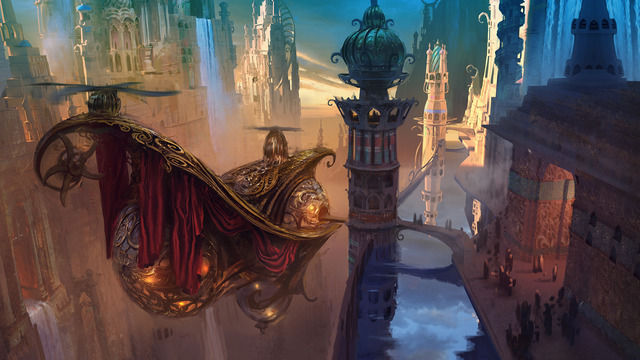
I once loaned my Esper artifact deck to a friend, and upon seeing the opening hand, he realized he had no idea how the puzzle was meant to be assembled. If you’ve ever played an artifact combo deck, then you understand that winning is not always an obvious path. Each draw makes each path fork and each card played triggers three abilities. Despite this, people are drawn to the archetype for the very reason others are deterred by it. There is no better example of an intricate puzzle deck than Breya, Etherium Shaper, and the two I’m discussing today: Flamewright and Glassdust Hulk.
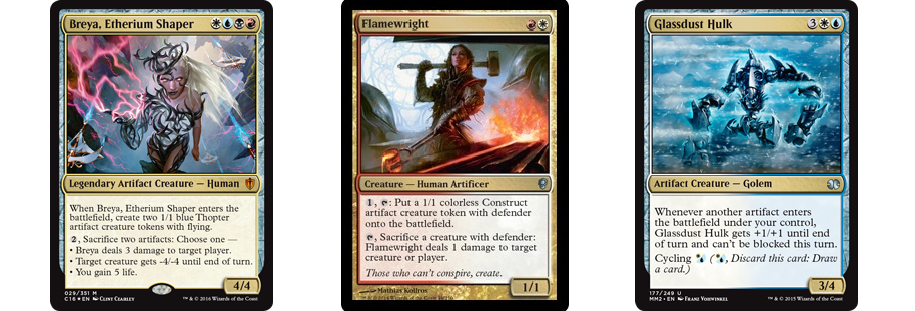
Our first commander is Flamewright, a red and white artificer from Conspiracy. Her first ability makes a small defender that will be buying us time to get some important pieces into play. These constructs may not be able to attack, but they’ll be doing plenty for us offensively in other ways. Her second ability lets us sacrifice a defender to ping a target. We won’t be using this one too much, as we want to clog up the board state with chump blockers and defenders.
Now, how are we going to make use of all these defending constructs? There’s a few cards we’ll be using to win, first of which is Vent Sentinel. Vent Sentinel will be doing damage to an opponent equal to the number of defenders we control, which we should have a pile of by now. We’ll also be running Reckless Fireweaver, so each time we make a construct, we’ll be dealing a damage. The last card we want that cares the constructs is Embraal Gear-Smasher. This guy lets us sacrifice our constructs to deal another two damage.
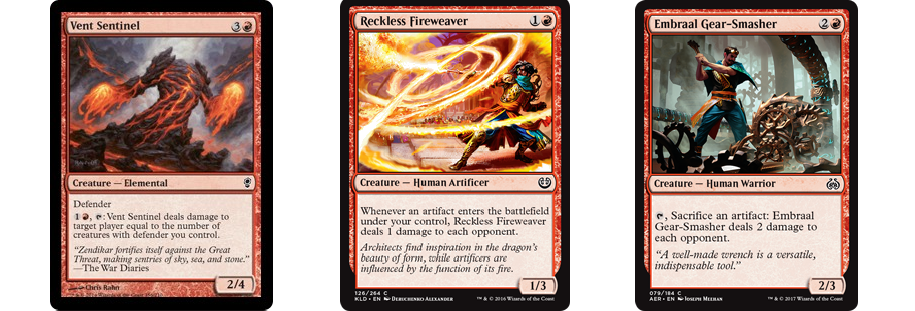
Looking at Reckless Fireweaver, I get the idea to employ more triggered abilities. With enough abilities like that out, we shouldn’t be able to play a single spell or ability without something else happening. To facilitate this trigger chaos, we’ll be running creatures that have the words “whenever you…” Each of these cards is a piece of our Rube Goldberg machine, and our opponents won’t know which piece to remove!

At this point, if we play an instant or sorcery, we’ll deal damage and gain life. If we play a creature, we’ll deal damage. If we play an artifact, we deal damage. If only we could deal damage upon drawing a card.
What else can we use the constructs for? Turns out there are quite a few cards that can make excellent use of them, from regenerating other creatures, to making mana, or buffing a huge creature. These cards will give our already useful constructs some extra utility, which will help us survive a game that may be going badly.
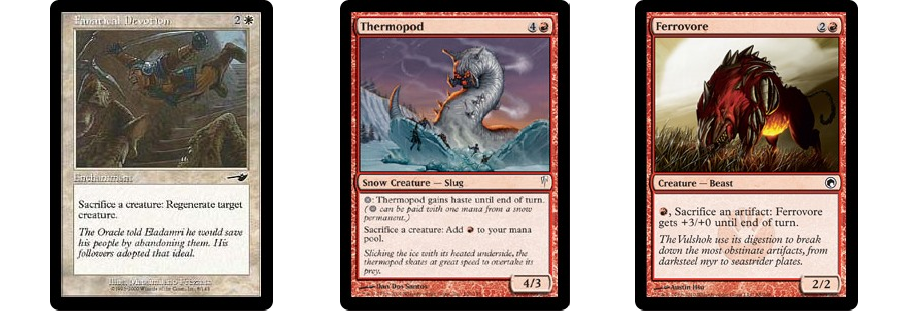
I think the last things this deck should look for are cards that let us get some extra value from sacrificing our constructs, and some untap effects to get more use out of our commander and friends.
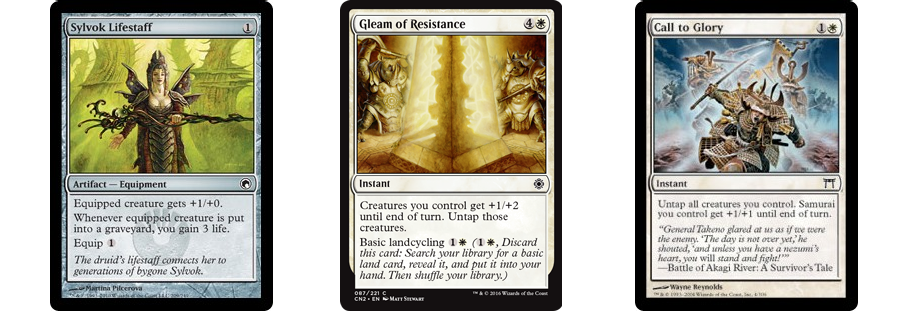
I think that covers most of the facets of Flamewright. We’ll be dropping constructs into play, casting spells to activate other abilities, and triggering abilities across the board. Speaking of triggered abilities, let’s have a look at our second artifact commander: Glassdust Hulk. Whenever you have another artifact come into play, this golem gets +1/+1 and unblockable! This means we’re going to be winning by dealing 18 commander damage.
I feel this commander is a little more straightforward, but there’s still some interesting options available to us. First up are our utility creatures. These guys will be gaining us life, protecting our commander, or salvaging artifacts from the graveyard.

I think a fun subtheme to run in this deck is golem tribal. Golems are artifact creatures, which means that when they enter, they’ll buff our commander. In addition, they typically have a large body great for blocking.

Now, I’m sure some of you are looking at Battered Golem with puzzled interest. Battered Golem is part of a combo here that will make us win the turn we get all the pieces together. The combo needs a zero cost artifact, Banishing Knack, and Golem Foundry. You use Banishing Knack on the Battered Golem, tap it to return the zero cost artifact to hand, replay the artifact to get a charge counter on the Foundry, to untap the golem, and to boost our commander.
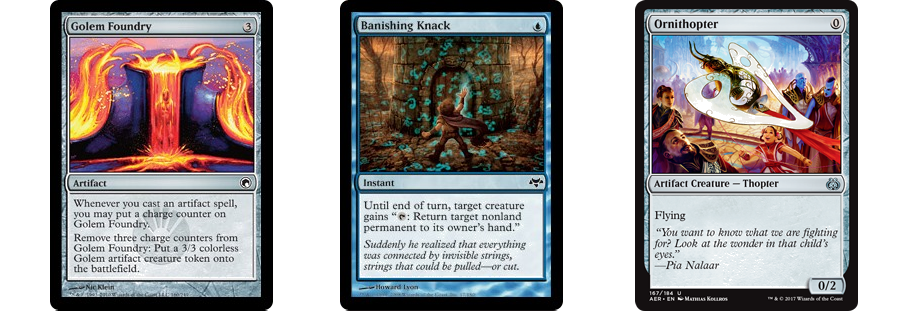
The hard part of this combo is getting all of the pieces together. To work around this, we’ll want some tutors to dig through the deck and find the right piece. Since we’re only working with commons, this can be a little tricky. Word of warning here, tutors are usually more expensive than other cards in a deck. Merchant Scroll is not needed for the deck, but is a fantastic addition for four dollars. Big money, I know.

The next thing this deck wants is equipment. These will do double duty here, boosting our commander when we play them, and then again when we equip them. The lower the cost of the equipment, the better, as that allows us to cast more artifacts in one turn.

That last card, Prying Blade is an interesting equipment. The treasure tokens it creates don’t help our commander deal more damage, as they come in after it has already dealt damage. However, this card will give us our last facet of the deck: Eggs. Eggs are artifacts that you sacrifice, typically for mana and card draw. With these, we can have some explosive turns were we chain together several of these cards.
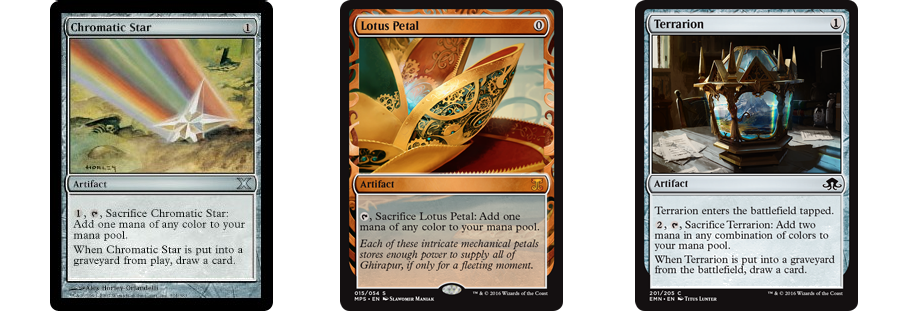
I think I have spoken enough about these two decks, and hope that you may be inspired to pick up this archetype. While the pieces may not fall into place right away, assembling a winning board and hand is an exciting puzzle to assemble. Next time I’ll be picking apart Yidris, Maelstrom Wielder, the crazy spell-slinging ogre, and his two pupils, Blizzard Specter and Bloodbraid Elf!
-Nate
@PDH_Homebase




Comments